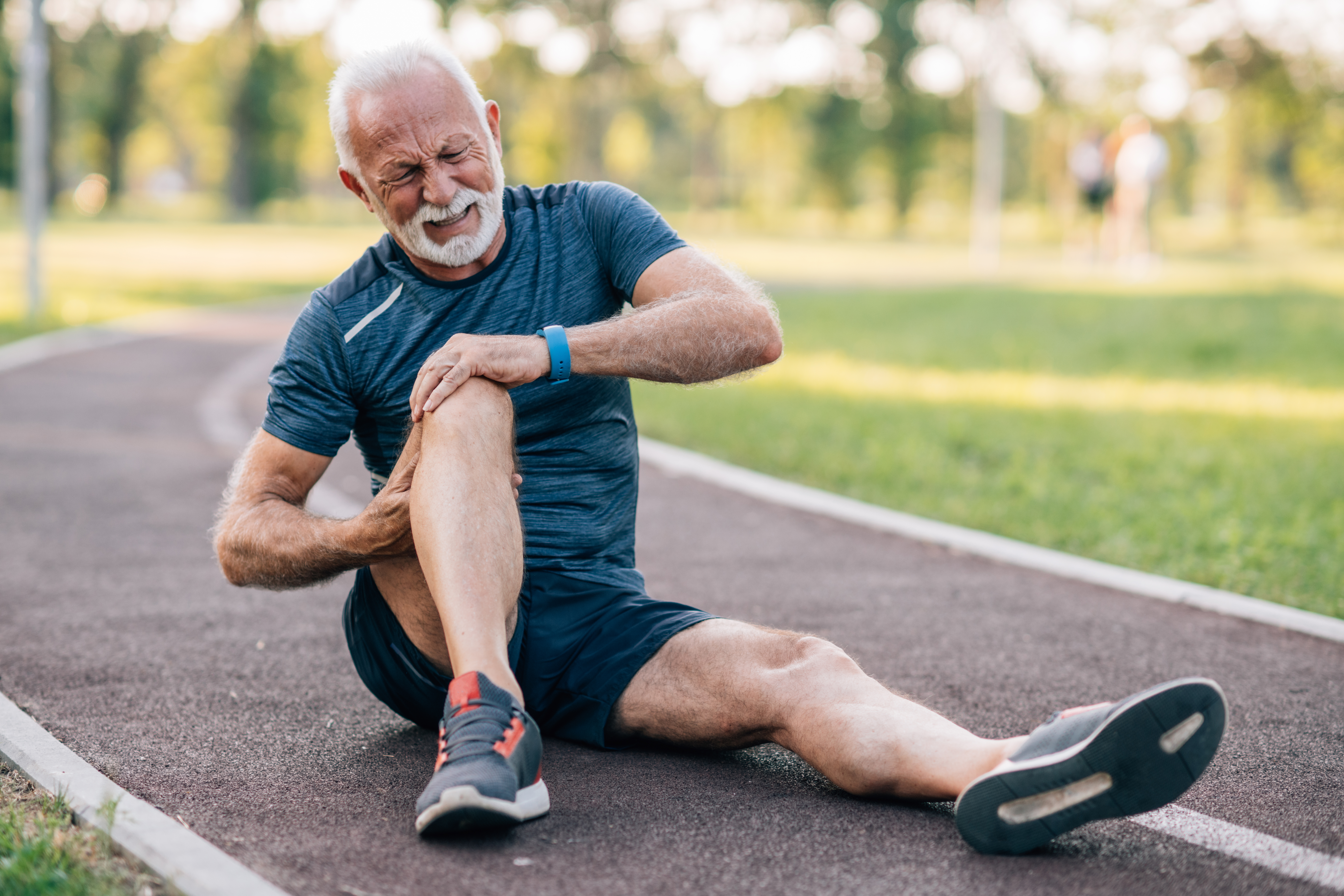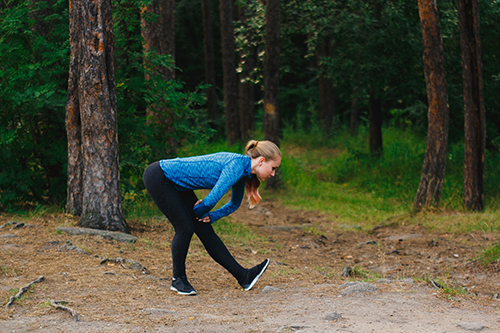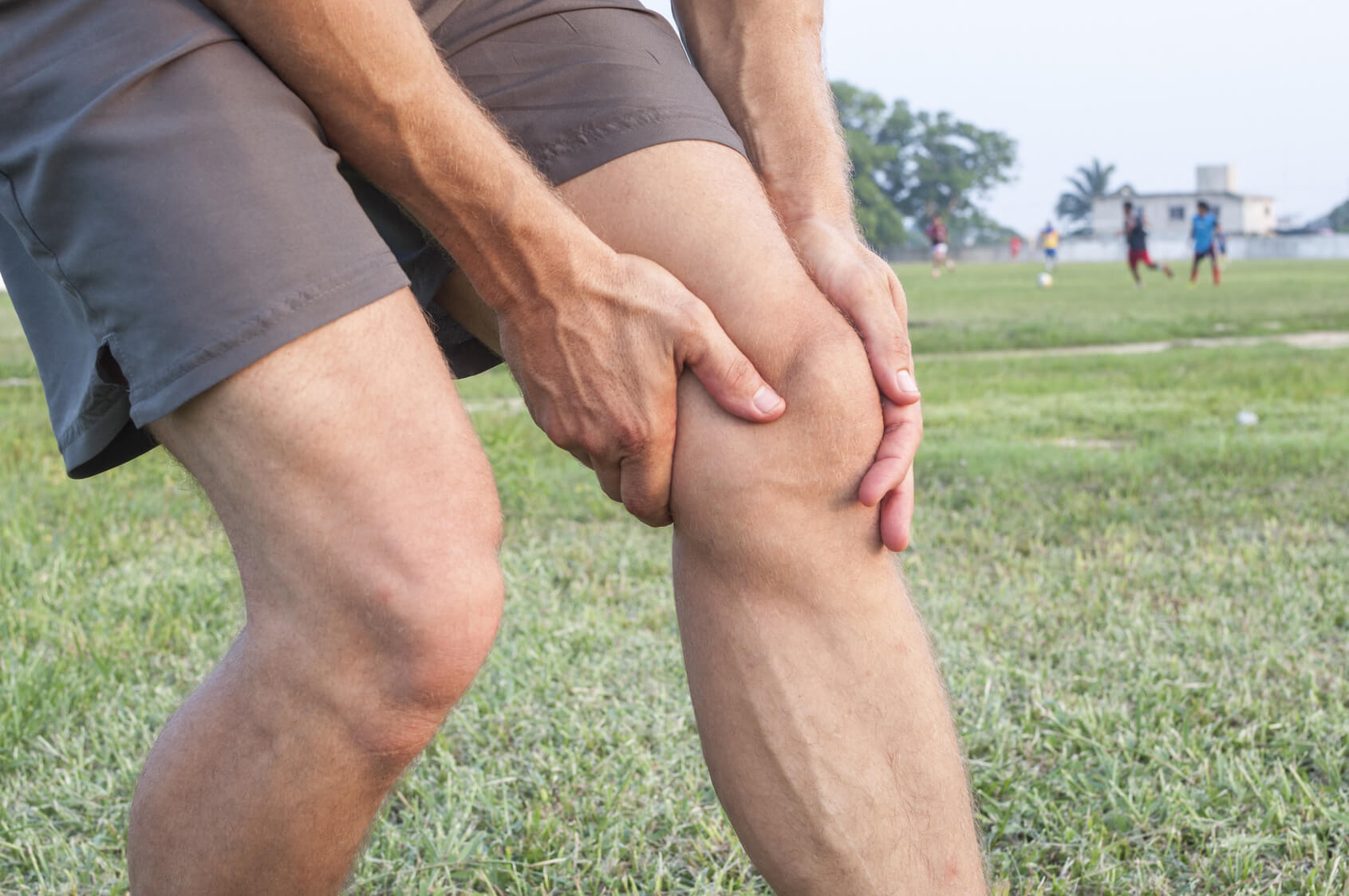Exercise is the best medicine and first line of defense against worsening knee osteoarthritis.
The Arthritis Foundation reports over 27 million Americans live with osteoarthritis. Osteoarthritis can affect any joint such as the knee, hip, and spine. The joints that bear the most weight, like the knee, are more commonly affected than a joint such as the elbow.
Knee osteoarthritis occurs when cartilage in the knee joints erodes. A crucial connective tissue, cartilage is more flexible than bone and provides support and lubrication for the joints to move freely. When the cartilage wears down, flexing and moving the knee can become painful because the bones rub against each other. This action inhibits many people from enjoying sports and many other activities.
The main contributing factor to knee osteoarthritis, and one that none of us can avoid is aging. Being overweight exacerbates the situation, as day after day more weight is placed on the knee. Women also tend to develop osteoarthritis more often than men because their hips are wider than the knees, causing possible misalignment and abnormal joint impact. Certain movements and sports that cause stress to the joint may also contribute to knee osteoarthritis.
How do you know if you have osteoarthritis of the knee?
Although a physical therapist will evaluate or assess the severity of your osteoarthritis, there are symptoms that likely indicate some level of osteoarthritis, including:
- Incremental increases in knee pain
- Discomfort or pain when climbing or descending stairs, standing from a seat or just walking
- Reduced range of knee joint motion while participating in activities and sports
- Waking up in the morning with a swollen knee
- Random knee-buckling, popping or cracking sounds as you move.
Once you’ve been diagnosed with osteoarthritis of the knee, you’ll be able to decide the right treatment course for you. It’s important to start conservatively when it comes to treatment. Surgery should be considered a last resort after prior treatments fail to bring relief.
How do you treat knee osteoarthritis?
First and foremost, start moving. Exercising and working out the knee does not worsen osteoarthritis. Physical activity is actually proven to help improve symptoms of arthritis. I recommend trying to keep as regular an exercise schedule as possible.
Those with osteoarthritis who are still exercising but are not feeling adequate relief may enlist the help of a physical therapist who will start exercising and strengthening the knee. Over-the-counter medicine, such as ibuprofen, reduces inflammation and provides many with pain and mobility relief.
But not everybody is so lucky. Some people don’t respond to exercise, physical therapy or medication. In these cases, surgery might be considered. The two surgeries that treat osteoarthritis of the knee are arthroscopic surgery and knee replacement surgery.
Arthroscopic surgery uses a thin tube with an attached camera inserted into the knee so that the surgeon can locate and remove damaged cartilage. This surgery is minimally invasive and only requires a few days of recovery.
Knee replacement, on the other hand, requires removing the entire knee joint and replacing damaged bone and joints with a prosthetic joint. Recovering from a knee replacement takes several months before returning to normal activities.
If you’re beginning to experience symptoms of osteoarthritis, try to keep active and enlist the help of a physical therapist before possibly electing invasive surgeries.



